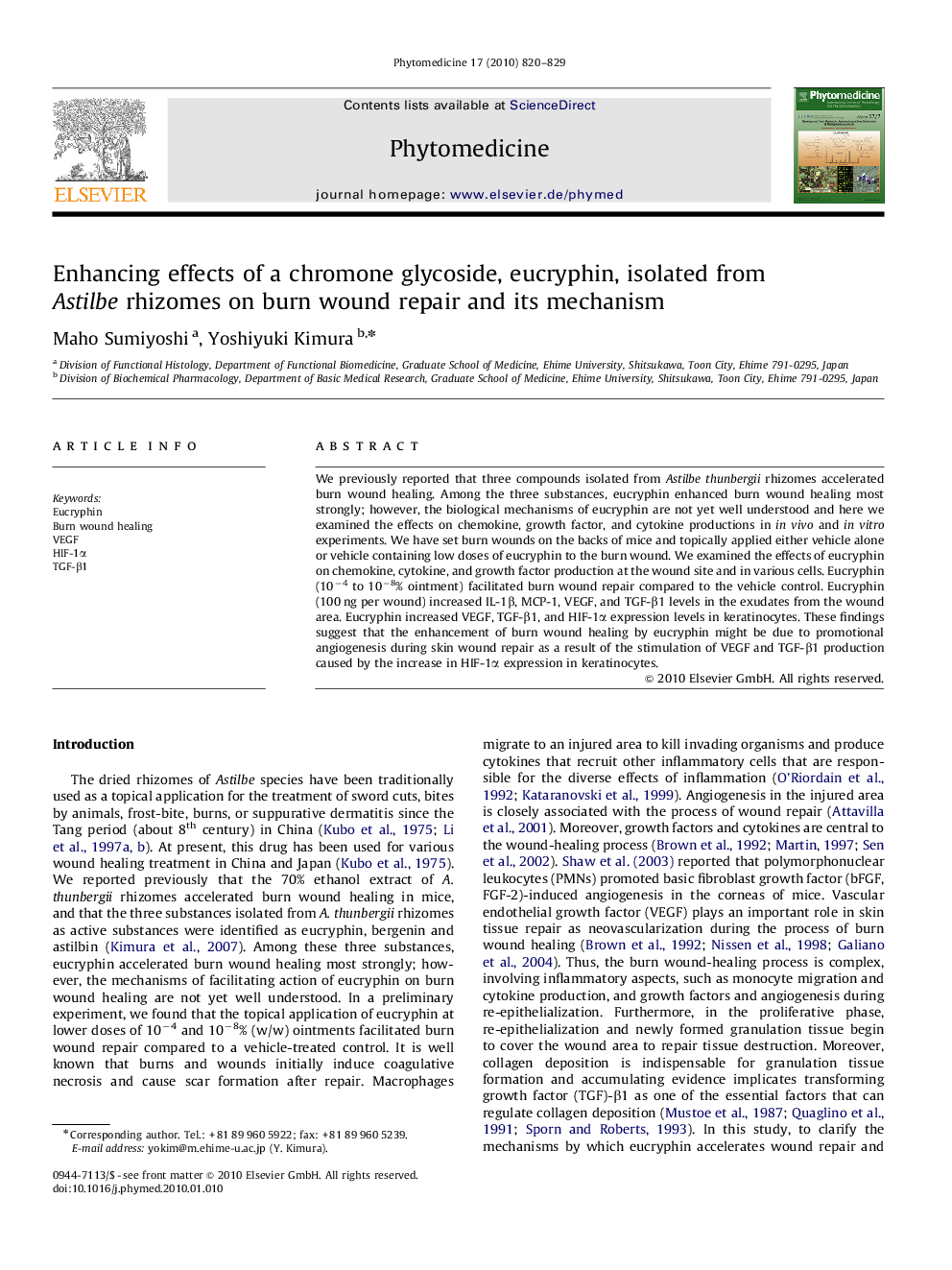| Article ID | Journal | Published Year | Pages | File Type |
|---|---|---|---|---|
| 2497065 | Phytomedicine | 2010 | 10 Pages |
We previously reported that three compounds isolated from Astilbe thunbergii rhizomes accelerated burn wound healing. Among the three substances, eucryphin enhanced burn wound healing most strongly; however, the biological mechanisms of eucryphin are not yet well understood and here we examined the effects on chemokine, growth factor, and cytokine productions in in vivo and in vitro experiments. We have set burn wounds on the backs of mice and topically applied either vehicle alone or vehicle containing low doses of eucryphin to the burn wound. We examined the effects of eucryphin on chemokine, cytokine, and growth factor production at the wound site and in various cells. Eucryphin (10−4 to 10−8% ointment) facilitated burn wound repair compared to the vehicle control. Eucryphin (100 ng per wound) increased IL-1β, MCP-1, VEGF, and TGF-β1 levels in the exudates from the wound area. Eucryphin increased VEGF, TGF-β1, and HIF-1α expression levels in keratinocytes. These findings suggest that the enhancement of burn wound healing by eucryphin might be due to promotional angiogenesis during skin wound repair as a result of the stimulation of VEGF and TGF-β1 production caused by the increase in HIF-1α expression in keratinocytes.
